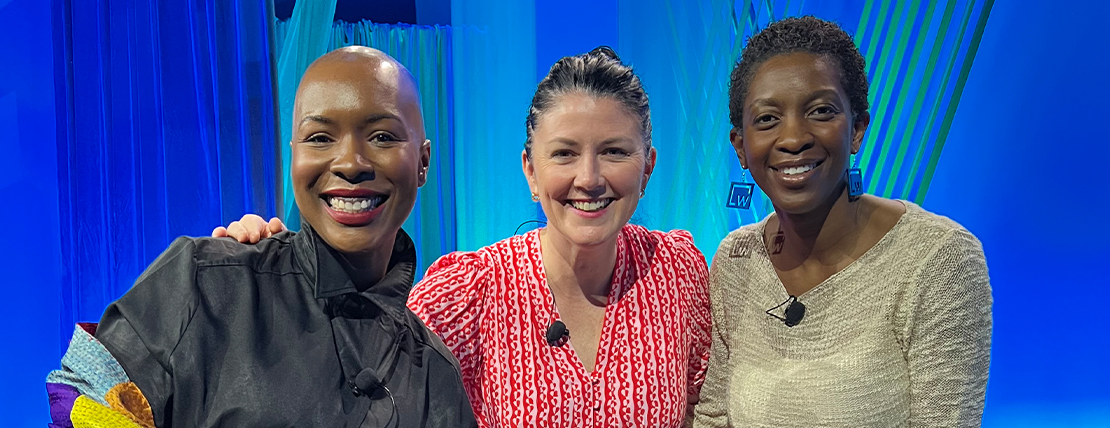- The vibrancy in tension. By deeply listening, TR pros can better understand employee experiences, and ground their decisions and investments in data.
- Address “whole person care.” Total rewards encompasses traditional benefits as well as emerging ones, such as hybrid work, pay transparency and ranges, and mental health and well-being support.
- Go beyond the survey data. To supplement survey data, lean on more intimate, personalized listening approaches to better understand the day-to-day employee experience.
It’s a volatile, disruptive, mad, crazy world, and total rewards professionals have their hands full dealing with it. Unique workforce intricacies (i.e., multi-generations, experiences, skills), increasing business complexity (i.e., globalization, stakeholder networks, recession fears) and quickening technology waves (i.e., AI, automation, analytics) are a few of the challenges … and opportunities. How do you deal?
When pondering the answer (or answers), stop for a moment and consider those full hands. Theresita Richard, the chief people and culture officer at Patagonia, may have provided a visual model while participating in a panel discussion, “Optimizing Total Rewards in a Volatile Work World,” at WorldatWork’s Total Rewards’24 conference Tuesday morning in Cincinnati.
Holding her hands tightly together side by side as a nest-like cup, she remarked how one Patagonia employee explained how the outdoor recreation clothing company’s total rewards effectively met needs and expectations.
“It’s an image I will never forget,” Richard stated. “She said [it represented], ‘This is what I feel from Patagonia; I feel held’ – that this is how Patagonia shows up [for her through benefits, compensation and more].”
One hand can’t hold as much as two. Two hands provide greater stability than one hand can since one side gives strength to the other. Warmth is also multiplied by a factor of two.
Richard and fellow panelist Katie Burke, the former chief people officer at HubSpot, (both pictured above from left to right, with session moderator Courtney McMillian) wove elements of a “two hands” model into how they approach volatility, change and the employer-employee relationship. Through their talk, they shared how on one hand, there is/are:
- Tension
- Benefits
- Survey and data
- The need to think strictly like a total rewards pro
On the other hand, there is/are:
- Tension (explanation in a moment)
- Much more than benefits
- Timely, personal touchpoints
- The need to think like a project manager, sales/marketing/product development leader and TR consumer
It’s all about balance, helping take you from where you are to where you want to be. Here are some details:
Embrace the Tension
Richard commented that Patagonia, in general, and its HR and TR functions, in particular, are focused on the concept of “vibrancy.”
“We’re here to ignite vibrant people that are driving a vibrant business and vibrant impact,” she said. “When you peel all those layers back, at the heart is a vibrant culture.”
As a self-professed word “geek,” she researched the origins of “vibrant” and “vibrancy” and found the roots go back to the 1600s and that, at its core, “tension was a requirement for vibrancy,” she said.
Burke and Richard shared that new/old view on tension is critical in a time when mental/emotional tension may well be a weighty byproduct of today’s business, economic and TR environment. And, as Burke stated, “I don’t think [the latter tension] is going away anytime soon.”
“It can feel very overwhelming,” Richard said, pointing to the ability to balance employee wants and needs through personalized benefits within the budget parameters of the organization.
“How do you offer holistic care that is going to meet workers in different places?” she continued. “We need to evolve as the world has evolved and the needs of our employees have evolved. What do we do when we have all these needs before us?”
That can lead to what she said is “a little bit of a love-hate relationship with tension. … You can’t say yes to everything, even when you want to.”
Enter the vibrancy aspect of tension. “What we are really doing with that is seeking to understand the lived experiences of our people, understanding where the struggles are, where the friction and the pain points are, [and] understanding what’s going to be most meaningful,” Richard said. “So that way, when we’re deeply listening, when we’re understanding those experiences, we can ground our decisions and our investments in data, both qualitative and quantitative, [and then] know where we are putting our dollars will have the maximum impact.”
Holistic Benefits Focused on ‘Whole Person Care’
Burke shared that, during her time at HubSpot, total rewards encompassed traditional and emerging benefits. Included in that was a commitment to hybrid work and giving employees the flexibility to pick their work location. In the U.S., the company was “ahead of the curve on pay transparency and ranges,” and supported mental health and well-being. “We were also early innovators in introducing fertility benefits,” she said.
While these benefits can help hiring, retention may be additionally fueled with a focus on skills development.
“You need to make sure your talent development strategies and your promotion velocity reflect that,” Burke said. “That’s a journey we were still evolving toward at HubSpot. Be mindful of the different elements that go into building a skills-based workforce.”
“Attend to the whole system,” Richard added. “One of the things we’ve really committed to is, how do we unlock access to opportunity in our workforce?” She said there are important ripples “when you impact one part of the employee journey or even the preemployment journey.”
When you do this, you move closer to what the panelists called “whole person care.”
Access the Data … and then Go Beyond It
The panelists shared that TR pros can be quite good at surveys and extrapolating the data from those. However, they warned about the limitations of such tools.
“We often talk about listening [to the workforce], and when we do, we immediately go to the survey, which is one moment in time,” said Richard. “It is one direction. You don’t know what’s going on with the person that day. And so, there are limitations to what survey data is able to give us. There is also just essentially lag time on what we learned from that.”
To supplement survey data, Patagonia and HubSpot lean on more intimate, personalized listening approaches.
“You can get further and further away from the day-to-day employee experience,” Burke said. Instead, it’s important to directly ask people, “help me understand” your preferences, opinions, pain points, etc.
“I love the idea of walking in people’s shoes,” she said.
Patagonia has taken that to an extreme level in a concept called “slice of life.”
“We actually accompanied some of our employees on their way to work and on their way home,” Richard said. “So, we got to understand the experience. What was the commute like? Were you on a train? Were you driving? Did you live 50 miles out from a [Patagonia] store because that’s what you needed to be able to do to afford the life that you wanted to have. What were the choices that you needed to make?”
Shadowing included childcare drop-offs and pickups, dog walks, and more.
Think Outside the TR Role
Concepts such as “slice of life” and “help me understand” can get TR professionals conceptualizing beyond their traditional tasks and roles. As the panelists shared, it can get them thinking more like product designers, sales and marketing pros, and even the total rewards consumer.
“We often do this with the customer journey and the customer experience to understand what’s really happening. Where are the friction points?” Richard said. “How do we really dive in and understand those? And then, really with that understanding and focus, how do we decide what we’re going to address? It’s really taking some of those same methods [used in marketing, product development and other areas] and applying it to the employee experience.”
Application, at times, can occur by looking in the mirror and seeing the employee within. To access benefits, consider being an active and pioneering participant.
In rolling out mental health benefits, Burke acknowledged the potential stigma around usage. So, at HubSpot, she was the first person to take a counseling session.
“[Doing and] leading by example makes a big difference,” Burke said.
The Road Ahead Is in Your Hands
Traversing volatility and disruption can be a bumpy ride. The panelists shared that resilience and continuous iteration can be important attributes for TR pros.
Moving ahead, Burke said HubSpot is exploring the potential of emerging technologies as well as low-tech solutions. Toward the latter, she shared that the software company is accelerating the practice of sharing omissions to its benefits.
“I’m a huge fan of this,” she said. “On a yearly basis, typically you have a meeting where you talk about your benefits and what you’re going to do. Often, a list of things you’re not going to tackle is secret to employees. It absolutely stinks to say what you’re not going to do, but saying it once and saying it loudly saves your team so much time throughout the year.”
Richard stated the benefits of a concept of “bless and release.”
“Say it with me: Bless and release,” she told the audience. “There are things we have done that have served us. They were really good decisions at the time, but the world around us has shifted and changed. The landscape has changed. So, we need to bless that thing for what it was, honor it for what it was, and then we need to release it so that we can make space for the new ways forward that we’re going to need to put into play, that are going to be relevant and resonant and longstanding for the time ahead.”
Editor’s Note: Additional Content
For more information and resources related to this article, see the pages below, which offer quick access to all WorldatWork content on these topics:







